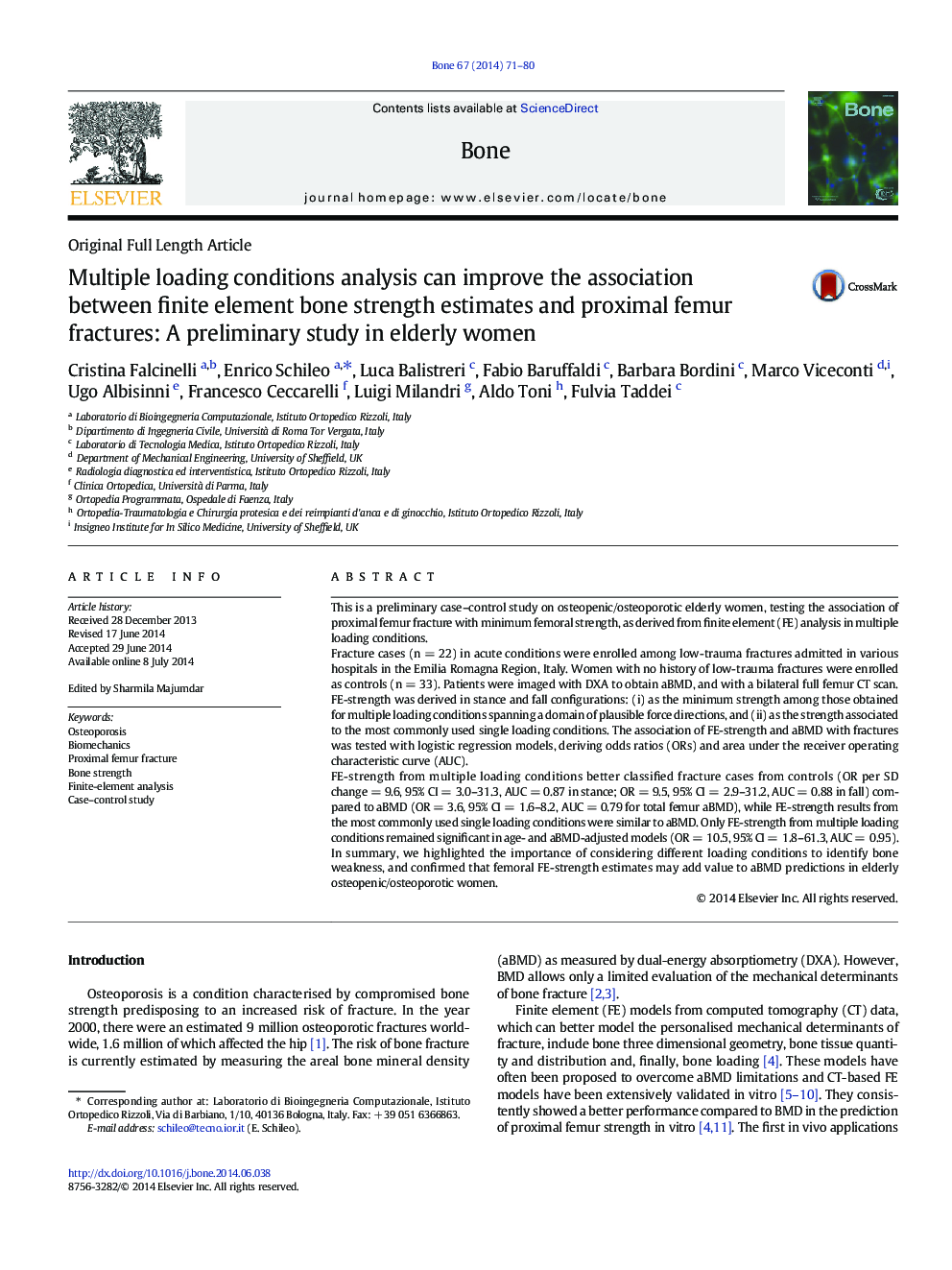| کد مقاله | کد نشریه | سال انتشار | مقاله انگلیسی | نسخه تمام متن |
|---|---|---|---|---|
| 5890301 | 1568152 | 2014 | 10 صفحه PDF | دانلود رایگان |
- A new interpretation of finite element estimates of femur strength is proposed.
- A range of plausible loading conditions is simulated to find the minimum strength.
- A case-control fracture study on osteopenic/osteoporotic women was performed.
- Minimum strength better classified fractures compared to aBMD or single-load strength.
This is a preliminary case-control study on osteopenic/osteoporotic elderly women, testing the association of proximal femur fracture with minimum femoral strength, as derived from finite element (FE) analysis in multiple loading conditions.Fracture cases (n = 22) in acute conditions were enrolled among low-trauma fractures admitted in various hospitals in the Emilia Romagna Region, Italy. Women with no history of low-trauma fractures were enrolled as controls (n = 33). Patients were imaged with DXA to obtain aBMD, and with a bilateral full femur CT scan. FE-strength was derived in stance and fall configurations: (i) as the minimum strength among those obtained for multiple loading conditions spanning a domain of plausible force directions, and (ii) as the strength associated to the most commonly used single loading conditions. The association of FE-strength and aBMD with fractures was tested with logistic regression models, deriving odds ratios (ORs) and area under the receiver operating characteristic curve (AUC).FE-strength from multiple loading conditions better classified fracture cases from controls (OR per SD change = 9.6, 95% CI = 3.0-31.3, AUC = 0.87 in stance; OR = 9.5, 95% CI = 2.9-31.2, AUC = 0.88 in fall) compared to aBMD (OR = 3.6, 95% CI = 1.6-8.2, AUC = 0.79 for total femur aBMD), while FE-strength results from the most commonly used single loading conditions were similar to aBMD. Only FE-strength from multiple loading conditions remained significant in age- and aBMD-adjusted models (OR = 10.5, 95% CI = 1.8-61.3, AUC = 0.95).In summary, we highlighted the importance of considering different loading conditions to identify bone weakness, and confirmed that femoral FE-strength estimates may add value to aBMD predictions in elderly osteopenic/osteoporotic women.
Journal: Bone - Volume 67, October 2014, Pages 71-80
